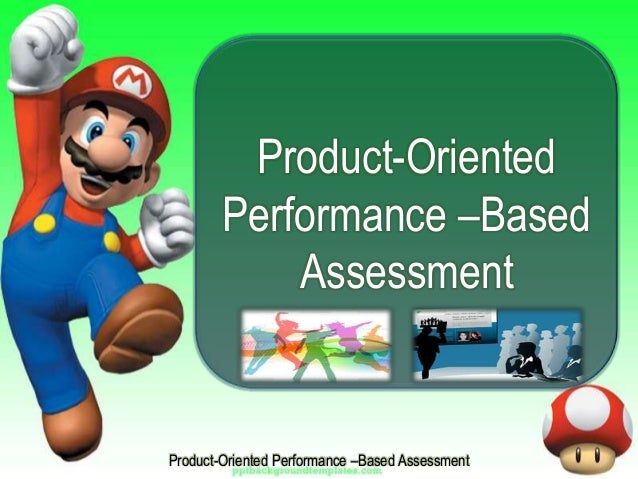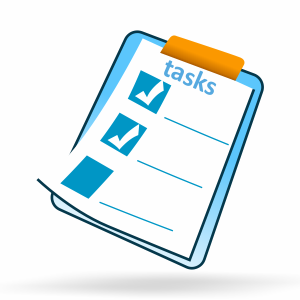FS 5:
“LEARNING
ASSESSMENT STRATEGIES”
EPISODE 5
“BUILD ME UP”

My
Target:
 At the end of this activity, you will be skillful in designing product-oriented performance assessment. At the end of this activity, you will be skillful in designing product-oriented performance assessment. |
MY
TASK:
Design a product-oriented
performance assessment by going through the process through the following
steps:
2.
Choose
one product-oriented activity and study the process.
3.
Design
a performance assessment plan for the product-oriented activity you have
chosen.
4.
Develop
a portfolio of your assessment plan.
5.
Reflect
on your experience.
|
OBSERVATION
NOTES
|
Name of the School
Observed: Isabela National High School
School Address: Claravall St.
San Vicente, City of Ilagan, Isabela
Date Visited: March 9, 2015
Grade/Year
Level: Grade 8- Aquamarine
Subject Area: Handicraft
|
Describe
in bullets the product-oriented activity you observe.
·
Teacher observes her students
performing specific task by asking the students to demonstrate a skill or
proficiencies.
·
The focal point of this activity
is to “create ladle based on the learning competencies given”.
·
The students are required to
accomplish the task on the time given.
·
The teacher provides scaffolding
while they do the task and students are free to ask questions.
·
The teacher gives instruction
clearly that easy to understand and follow.
· The scoring rubrics are pre-specified
and public made by the teacher. Specifically, teacher used holistic rubric to
rate the product or output of the students.
· The students give an impression
that they are enjoying what they are doing because it is authentic for them.
|
MY PLAN
|
||||||||||||||||||
Learning Objectives:
The students should able to:
r list
the materials needed in making a ladle.
r follow
the procedures in making a ladle
r create
ladle using coconut shell.
|
||||||||||||||||||
General
Product-oriented performance Task:
r To
produce a hand-made product out of raw materials specifically the coconut
shell.
|
||||||||||||||||||
Target Skills:
r develop
student’s higher-thinking skills.
|
||||||||||||||||||
Learning Activities
(Specific tasks):
r Students
should prepare the materials needed.
r Students
should create a ladle using coconut shell depends on the measurement
assigned.
r Students
should pass their project on the given time.
|
||||||||||||||||||
Assessment Tasks:
The making of the product will be
evaluated through the following criteria.
|
NOTES ON MY PRODUCT-ORIENTED ASSESSMENT PLAN
|
|
Name of the School Observed: Isabela
National High School
School Address: Claravall St.
San Vicente, City of Ilagan, Isabela
Date Visited: March 9, 2015
Grade/Year Level: Grade
8-Aquamarine
Subject Area: Handicraft
|
|
What are the best
features of my product-oriented performance assessment design?
ü The
students learn by doing because they apply the task in real world setting.
ü The
multiple criteria or a standard of excellence is pre-specified and public.
|
|
What specific
conditions are necessary for a successful use of my product-oriented
performance assessment design?
ü The
students are required to perform a task through product.
ü The
teacher should provide necessary scaffolding for students so that they will
understand the task easily. S/he should provide feedback and coaching or it’s
simply s/he needs to monitor student’s progress.
ü We
should follow the steps in planning for product-performance based assessment
« Set
the competency to be assessed.
« Set
the task to be performed by the students.
« Set
the criteria in scoring the task.
ü The
task should have complexity of skills.
|
|
What basic points
should the user of this design consider?
ü The
task should focus on what really to be assessed. It should follow the SMART
pattern.
ü The
competency should suitable for student’s interests and level of
intelligences.
ü The
assessment should authentic of every student.
ü The
assessment purpose, objectives, student instruction etc. should be stated
clearly and comprehensible. The objectives should contain the three Bloom’s
Taxonomy Domain (cognitive, affective and psychomotor).
ü The
scoring rubrics should be presented in public and pre-specified. It should be
clearly and understood.
|
ANALYSIS
 |
1. Do
you think your originally design product-oriented performance assessment can
appropriately assess the teacher’s learning objective? Why? Why not?
Yes, because the product-oriented performance
assessment design is align to the learning targets for the students. The plan
focuses on what to assess that reflects to the learning targets. It is
appropriate because it covers all domain from cognitive to psychomotor.
2. Why
do teachers need to give attention to the students’ product-oriented tasks? Why
do they need to assess them?
Teacher needs to give attention to the students’
product-oriented assessment because it provides evidence that they can use or
transferred their learning to real life situation and an evidence of students
learning or understanding. It determines whether or not his/her students can
perform a task through product or having an output. It also tests if students
can do a task on their own. It develops student’s extra-ordinary skills like creativity;
being artistic that reflects their personality or identity.
3. In
what conditions can the product-oriented performance assessment be need more
appropriately?
There are many conditions to be considered in
product-oriented performance assessment but always depend in the learning
target you want to assess. It should provide complexity of cognitive and skills
for students and authentic for students.
REFLECTION
 |
Write
your reflection of thoughts, feelings, personal learning strategies, insights
or new understanding from your experience in using authentic assessment. Then
share your reflection with your FS teacher and classmates. Also draw some
insights from your classmates’ sharing.
 After
answering all the questions in this field study I realized that as a future
teacher we should be more observant and give more attention to our
pupils/students because all of them have a different characteristics and
capabilities that we should enhance through the use of different methods,
strategies and assessment tools. Also, after answering this field study I
understand how a teacher should be in dealing his/her pupils. And through this
I have learned many things that I can use when I am already in the field of
teaching. That in giving assessment is a task that we need to think and examine
carefully and we should based it on the learners and the learning objectives
for it to be successfully done.
After
answering all the questions in this field study I realized that as a future
teacher we should be more observant and give more attention to our
pupils/students because all of them have a different characteristics and
capabilities that we should enhance through the use of different methods,
strategies and assessment tools. Also, after answering this field study I
understand how a teacher should be in dealing his/her pupils. And through this
I have learned many things that I can use when I am already in the field of
teaching. That in giving assessment is a task that we need to think and examine
carefully and we should based it on the learners and the learning objectives
for it to be successfully done.
Using
authentic assessment, students learn by themselves because they experience the
task in firsthand, they apply their knowledge and understanding in real world
application or setting. It is simply students learn by doing. It is very
essential to use authentic assessment because it measures student’s ability,
skills or proficiencies of students depending on what the intended to assess.
It develops their extra-ordinary skills and will encourage and motivate them to
do a complex task on their own. Nowadays, both process-and-product performance
based assessment are very important; it tells not only what students know but
how they can do through actual demonstration and produce a product/output.
As future teacher, we should be skilled in choosing and
developing assessment methods appropriate instructional decision. In this field
of study, it’s clear for me the importance of having an assessment inside the
classroom form traditional, performance-based to authentic assessment. There’s
a lots of methods in assessing students but it always depends on what we
assessed.
